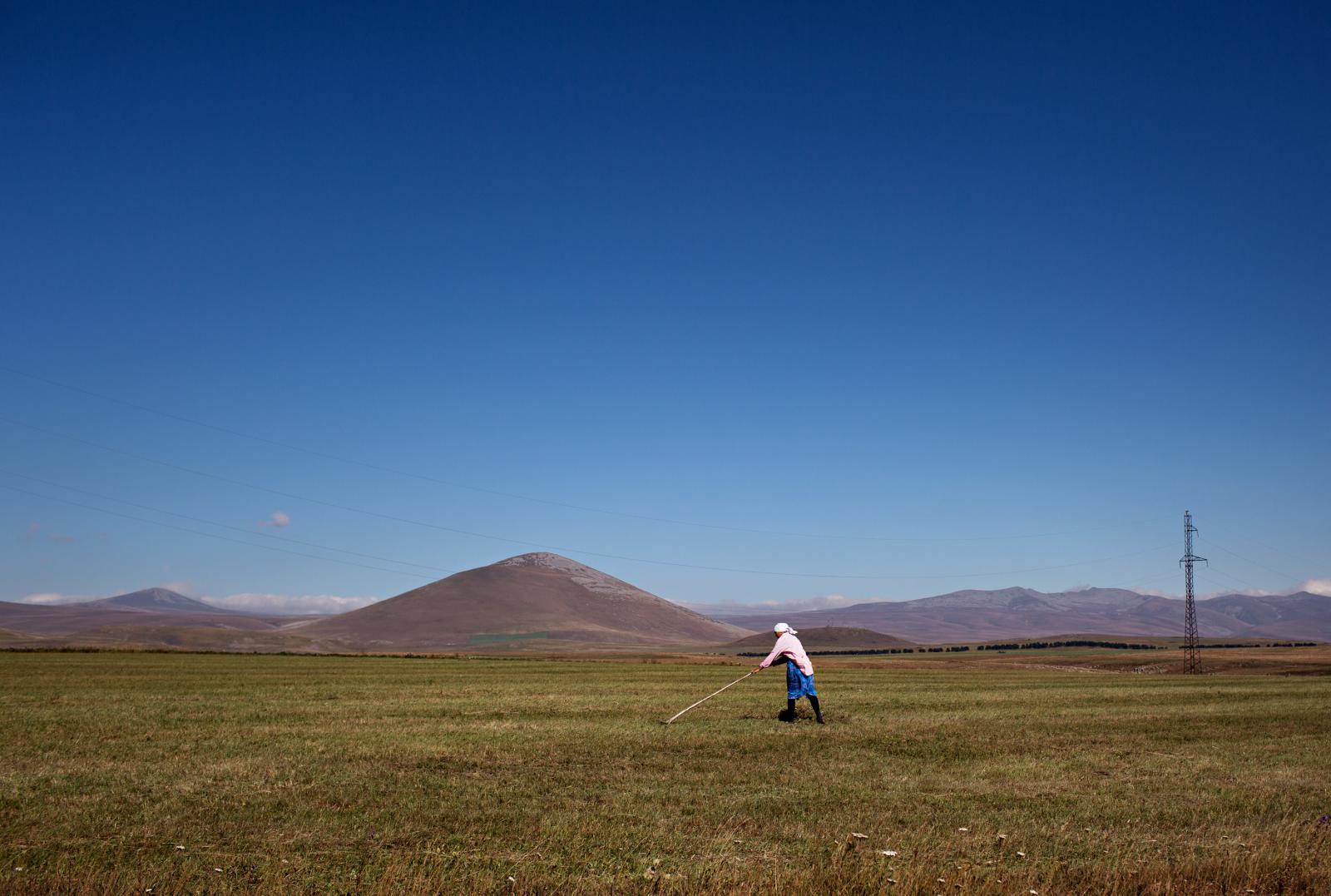Public Story
Living in Gorelovka
"The mystery of human existence lies not in just staying alive, but in finding something to live for."
"The Grand Inquisitor" in Fyodor Dostoyevsky's The Brothers Karamazov (1879-1880)
Life in Gorelovka, a small village in southern Georgia about 10 kilometers (6 miles) from the Armenian border, is not easy. Not during the winter which lasts about seven months, nor during the rest of the year when the focus is preparing for winter. In July, however, Gorelovka is picturesque as great lush plains surround this small village of around 1000 people.
While the community is made up of those from different ethnic backgrounds - from Georgian refugees who have resettled this region after landslides destroyed their homes to relocated Muslims to the exiled Doukhobors - everyone faces the same concerns of survival relying on subsistence farming with very little commerce. Despite the difficulty of everyday life and ethnic diversity, life is peaceful.
Gorelovka was founded in the 1840’s by the Doukhobors: a group of Christian Russians exiled to the region by Tsar Nicholas I. They were exiled after burning their weapons of war, rejecting the Russian Orthodoxy, and - as pacifists - refusing to join the army or fight in any wars. The Doukhobors believe in peaceful coexistence with nature. Their approach to Christianity is conceptual in that they “internalize the words and conduct of God as portrayed in the Bible and by Jesus Christ to create a set of characters by which to act.” It is said that Leo Tolstoy helped many relocate to Canada where a large population of Doukhobors live today, while a minority of Doukhobors live in Georgia, Ukraine and other neighbor countries. When they came to Georgia, they built homes putting sand from the nearby lake on their roofs to keep warm, and painted their homes in joyful hues of white, blue and green as they created a communal living environment in this harsh region.
While the community is made up of those from different ethnic backgrounds - from Georgian refugees who have resettled this region after landslides destroyed their homes to relocated Muslims to the exiled Doukhobors - everyone faces the same concerns of survival relying on subsistence farming with very little commerce. Despite the difficulty of everyday life and ethnic diversity, life is peaceful.
Gorelovka was founded in the 1840’s by the Doukhobors: a group of Christian Russians exiled to the region by Tsar Nicholas I. They were exiled after burning their weapons of war, rejecting the Russian Orthodoxy, and - as pacifists - refusing to join the army or fight in any wars. The Doukhobors believe in peaceful coexistence with nature. Their approach to Christianity is conceptual in that they “internalize the words and conduct of God as portrayed in the Bible and by Jesus Christ to create a set of characters by which to act.” It is said that Leo Tolstoy helped many relocate to Canada where a large population of Doukhobors live today, while a minority of Doukhobors live in Georgia, Ukraine and other neighbor countries. When they came to Georgia, they built homes putting sand from the nearby lake on their roofs to keep warm, and painted their homes in joyful hues of white, blue and green as they created a communal living environment in this harsh region.
After the collapse of the Soviet Union, non-Doukhobors began moving into the area. With the rise of nationalism and the arrival of Georgians into villages such a Gorelovka, the Doukhobors were no longer welcome - many moved away but a handful still remain.
Nearby Armenians also began moving into the region in good numbers and now wield a great deal of influence. In response to this influence and frustrated by the self-proclaimed independence in the Abkhazia region in the north of Georgia, the Georgian government promotes ethnic diversity by encouraging Muslims to settle abandoned homes in Gorelovka. The plan appears to be that by diversifying the ethnic blend of the region, the Armenians will be less likely to want to follow the example in Abkhazia and declare their independence or worse yet: get annexed by their Armenian neighbors.
The Muslims who inhabit abandoned structures in the village, farm the land and live peacefully with everyone else. One notable separation however remains in the community: the Muslims are prohibited to bury their dead in the village cemetery forcing them to travel some 250 Kilometers (155 Miles) to the nearest Muslim cemetery.
As a result of various world events paths crossed and lives were changed. The diverse people of Gorelovka have live in a harsh environment, surrounded by stunning scenery sliced by dilapidated roads.
Nearby Armenians also began moving into the region in good numbers and now wield a great deal of influence. In response to this influence and frustrated by the self-proclaimed independence in the Abkhazia region in the north of Georgia, the Georgian government promotes ethnic diversity by encouraging Muslims to settle abandoned homes in Gorelovka. The plan appears to be that by diversifying the ethnic blend of the region, the Armenians will be less likely to want to follow the example in Abkhazia and declare their independence or worse yet: get annexed by their Armenian neighbors.
The Muslims who inhabit abandoned structures in the village, farm the land and live peacefully with everyone else. One notable separation however remains in the community: the Muslims are prohibited to bury their dead in the village cemetery forcing them to travel some 250 Kilometers (155 Miles) to the nearest Muslim cemetery.
As a result of various world events paths crossed and lives were changed. The diverse people of Gorelovka have live in a harsh environment, surrounded by stunning scenery sliced by dilapidated roads.
























